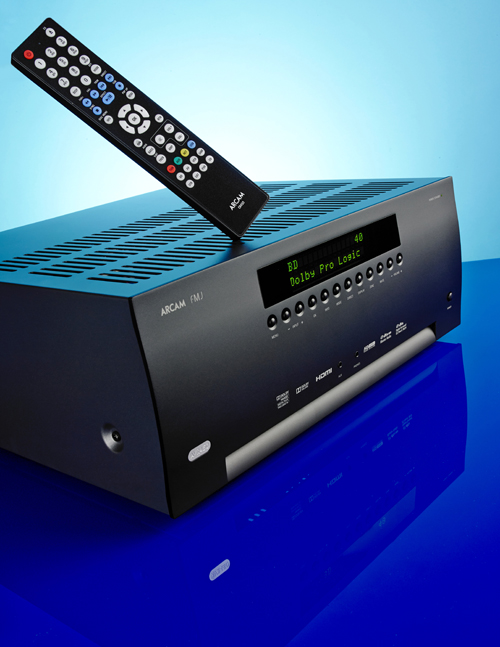What Hi-Fi? Verdict
A great amp with some notable musical skills, but it loses a star compared with its better-performing, better-specified rivals
Pros
- +
Delicate, likeable character
- +
Detailed, strong midrange
- +
Musical
- +
Dynamically strong
Cons
- -
Smaller soundfield
- -
Limited streaming functionality
- -
Bass lacks impact of competitors
- -
7.1 only
Why you can trust What Hi-Fi?
The FMJ AVR450 can look a little under specified on paper compared with its rivals.
It’s a 7.1 channel amp, rather than the 9.2 channels we’re more used to seeing at this price, and claims a relatively low 110W of power per channel into eight ohms – the cheaper Yamaha RX-A3030, by contrast, offers a claimed 150W under the same conditions.
Even so, it has its own charms with which to tempt the buyer.
Sound quality
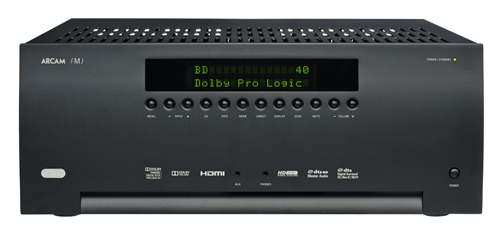
Given an explosion-heavy scene to chew on, the Arcam presents an ample soundfield. But that modest power output does mean that, although blasts sound solid, punchy and precise, they don’t have the same muscle behind them that’s found on the best in this class.
Bass is taut and controlled but not as weighty as we’d like, and that results in a loss of impact and excitement when it comes to the big action scenes.
Where the Arcam’s strengths do lie, though, is in its open, airy treble and well balanced midrange.
Vocals sound crisp and delicate, and have a wonderful handle on subtlety and transparency that means even the finest detail isn’t ever overlooked.
But there’s energy here too, and although some attack is slightly lacking lower down the frequency range, it surfaces in the midrange and treble.
It helps the musical soundtrack of Man Of Steel to build momentum, tension and contemplation at various points in the movie – you don’t always need big explosions to create an impact.
It’s a fast mover, and is able to keep up with sudden shifts in dynamics admirably. The spread of sound between speakers is good, if not quite as cohesive as the competition, though.
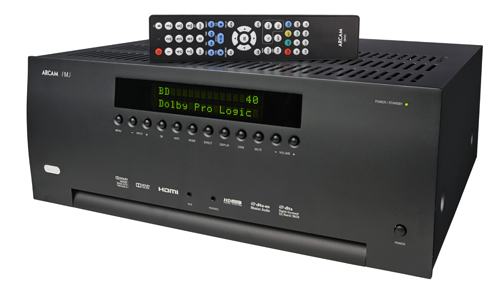
In the scene in Man of Steel when Clark is overwhelmed by his senses, the different sounds whizzing around the room aren’t quite as precise or as seamless in their movement as on the Pioneer, for example.
With its roots in audio, Arcam prides itself on its AV receivers feeling just as at home with stereo music as they do with surround soundtracks.
We’ll always prefer even a budget stereo amp when it comes to out and out musical performance, but the AVR450 is an enjoyable listen.
It has a fluid yet precise character, times well, and does a good job of organising and making sense of even complex rhythms.
Connectivity
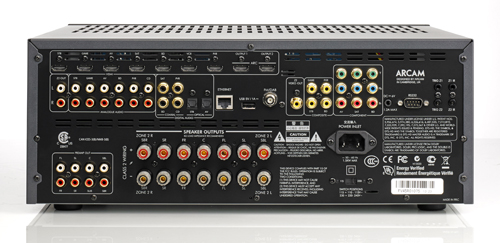
This is a mixed bag. A perfectly acceptable, though not overly generous, seven HDMI inputs are found around the back – all capable of 3D and 4K upscaling – alongside two HDMI outputs.
Seven analogue ins are supported by three component inputs and four composites, while digital connections are covered by four coaxial ins and two opticals.
There’s also an aux-in on the front panel, alongside a 3.5mm headphone jack.
You’ll also find a whole set of pre-amp outs, an FM/DAB radio aerial input (so no AM, sports fans) and the ability for multi-zoning by using two of the amp’s seven well spaced speaker terminals for a second zone.
It’s much less accommodating for digital music. This is a purist amp – don’t expect Bluetooth (even via an adapter), Spotify Connect (or any built-in streaming services for that matter), front-mounted USBs for easy device hook-up or any MHL port.

It is DLNA 1.5 certified, so it will stream from compatible networked devices in that respect, but that’s your lot.
Also, as there’s no wi-fi adapter, you’ll need to make sure you can hardwire it to your router to get it on to a network.
There is a USB port on the back, but it’s not Apple-certified, so don’t expect it to charge your iOS device while playing. It’s not asynchronous either.
At this price, and given the the competition from the likes of the aforementioned Yamaha and the impressive Pioneer SC-LX87, these missing features feel more like stubbornness on Arcam’s part than anything else, and are things people are coming to expect from the hub of their home entertainment system.
Not everyone will miss them, but limiting a device’s functionality while the competition is doing the opposite seems a strange way to stand out in the market.
Sound processing
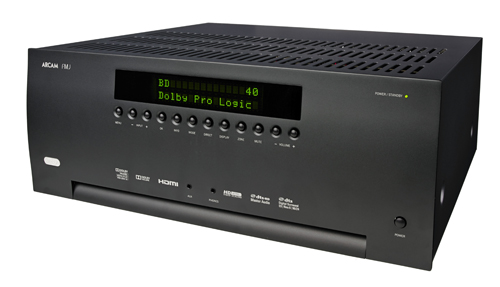
The AVR450 is similarly purist in its DSP options too, which don’t stretch much beyond the standard Dolby and DTS sound modes.
While we’d argue these are probably all you need, if you’re a fan of the Yamaha philosophy of ‘more is more’, you might find yourself left wanting here.
It certainly looks the part of a £2000 amp though, feeling reassuringly hefty. The look is neatly minimalist while, in contrast, the remote is pretty flashy – backlit to make it easy to use in the dark.
Set-up is relatively easy. The on-screen menus don’t have some of the design flourishes that you’ll see elsewhere, but the rather simplistic layout makes sense and is easy to navigate.
The automatic speaker-calibration procedure, using the microphone included, is quick and simple.
When we ran the sequence, the settings it decided on didn’t require any further tinkering after completion.
Verdict
We feel quite torn over this Arcam. There’s plenty to like here – from its balanced tonal character to its admirable way with music – and heard in isolation we’d struggle to see people being disappointed with it.
But compare it to the competition from the Yamaha RX-A3030 and Pioneer SC-LX87 and it is instantly outclassed in size, power and specification.
Arcam’s resistance to embrace digital music fully in its specsheet is notable too – we’d have liked to have seen support for streaming services to keep the AVR450 competitive.
If ultimate power isn’t top of your wish list in a home cinema amp and streaming features aren’t essential, then Arcam’s purer, more delicate way of doing things could just win you over.
MORE: See all our AV receiver Best Buys
What Hi-Fi?, founded in 1976, is the world's leading independent guide to buying and owning hi-fi and home entertainment products. Our comprehensive tests help you buy the very best for your money, with our advice sections giving you step-by-step information on how to get even more from your music and movies. Everything is tested by our dedicated team of in-house reviewers in our custom-built test rooms in London, Reading and Bath. Our coveted five-star rating and Awards are recognised all over the world as the ultimate seal of approval, so you can buy with absolute confidence.
